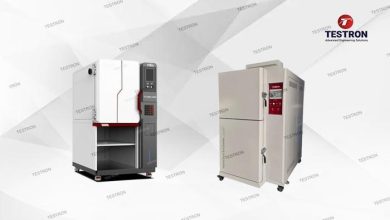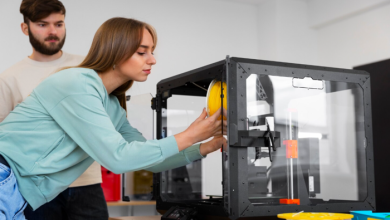
CNC machining and manual machining are two key manufacturing methods with distinct strengths and applications. CNC uses computer control for precision and efficiency, while manual machining relies on human operation for flexibility. Each method serves different needs, and understanding their differences helps determine the best fit for various industries and projects.
What Is Manual Machining?
Manual machining is the traditional method of shaping materials like metal, wood, or plastic into custom parts or products. It involves the use of machines such as lathes, milling machines, or drill presses, all operated by hand.
This process requires a skilled machinist who uses hand tools and precision instrumentation to adjust the settings and guide the material through the cutting tools. Since every adjustment relies on human expertise, manual machining requires extensive training and hands-on experience.
Key Characteristics of Manual Machining:
- Hands-On Operation: Machinists control the machine personally, making adjustments based on measurements and real-time observation.
- Flexibility for Small Jobs: Ideal for producing one-off parts, prototypes, or small batches.
- No Programming Needed: Unlike CNC machining, no software or code is required to operate manual machines.
- Time-Consuming: Each step must be performed manually, which can be labor-intensive and slower for complex projects.
Manual machining is widely used in applications where simplicity, affordability, or small-scale production is the focus.
What Is CNC Machining?
CNC machining is a more advanced and automated alternative to manual machining. This method uses a computer to control the movements of machining tools like drills, lathes, or mills. The machinist programs the machine using CAD (Computer-Aided Design) or CAM (Computer-Aided Manufacturing) software, which tells the CNC equipment how to execute precise operations on the material.
Once programmed, the CNC machine can automate complex cuts, shapes, or designs with incredible accuracy and repeatability.
Key Characteristics of CNC Machining:
- Precision and Consistency: CNC machines operate with micrometer-level precision, delivering high-quality results consistently.
- Automated Operation: The machine does the work autonomously after it has been programmed, reducing manual labor.
- Ideal for Large Batches: Perfect for producing many identical parts quickly and efficiently.
- Programming Required: Operators must be trained to write or interpret G-code, the language used to control CNC machines.
CNC machining is commonly used in industries like aerospace, automotive manufacturing, and medical device production, where accuracy, speed, and scalability are paramount.
Key Differences Between CNC and Manual Machining
- Operation and Control
- Manual machining relies on tactile input and decisions made in real-time by a skilled machinist.
- CNC machining is controlled through a pre-written program, reducing the need for constant human intervention.
- Speed and Efficiency
- Manual machining can be slow when working on complex parts, as each operation requires setup and adjustment.
- CNC machining excels in speed and efficiency, especially for high-volume production runs. Once the program is written, the machine operates continuously with minimal oversight.
- Accuracy and Consistency
- Manual machining offers decent accuracy but can be subject to human error.
- CNC machining achieves outstanding precision and consistency, particularly for intricate designs or tight tolerances.
- Cost
- Manual machining tends to have a lower upfront cost, making it suitable for smaller businesses or hobbyists.
- CNC machining often requires a significant investment in equipment and software, but this cost is offset over time through higher production volumes and reduced labor needs.
- Skill Level
- Manual machinists require advanced skills in hand-eye coordination, tool handling, and measurement techniques.
- CNC operators need training in programming, understanding G-code, and using CAD/CAM software effectively.
- Applications
- Manual machining is better suited for one-off parts, repairs, or experimental prototypes.
- CNC machining thrives in manufacturing large quantities of identical parts, creating complex geometries, and maintaining strict tolerances, especially when combined with custom metal fabrication like that in Salt Lake City.
The Benefits of Manual Machining
Despite advancements in technology, manual machining still holds relevance, thanks to its unique advantages:
- Cost-effective for small projects or low-volume production.
- Allows for real-time customization and adjustments during the machining process.
- Ideal for simple, straightforward tasks or quick repairs.
- Provides hands-on experience and a deeper understanding of machining principles.
The Benefits of CNC Machining
CNC machining offers significant advantages that can’t be matched by manual methods:
- Faster production speeds and greater output for bulk manufacturing.
- Higher precision and uniformity, eliminating variability.
- The ability to create intricate and complex parts with ease.
- Reduced physical labor and increased safety for operators.
- Compatibility with a broad range of materials and sophisticated designs.
Choosing the Right Option for Your Needs
The choice between CNC and manual machining depends on several factors, including:
- Quantity: For small runs, manual machining is more practical. For large-scale production, CNC is the clear winner.
- Complexity: CNC machining is ideal for intricate designs, while manual machining works for simpler tasks.
- Budget: Manual machining has lower initial costs, but CNC machining offers better long-term cost efficiency for high volumes.
Conclusion
CNC machining dominates modern manufacturing, thanks to automation and digital advancements, but manual machining remains essential for specialized jobs and skill-building.




